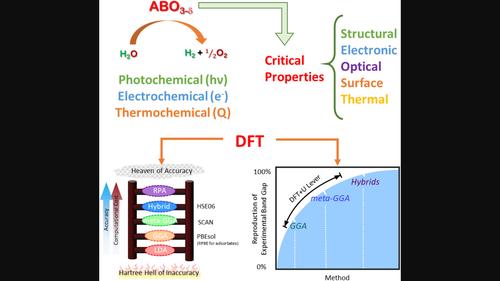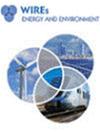Density functional theory modeling of critical properties of perovskite oxides for water splitting applications
IF 5.4
3区 工程技术
Q2 ENERGY & FUELS
引用次数: 0
Abstract
Water splitting (WS) driven by solar energy is considered as a promising strategy to produce renewable hydrogen from water with minimal environmental impact. Realization of large‐scale hydrogen production by this approach requires cost‐effective, efficient and stable materials to drive the WS reaction. Perovskite oxides have recently attracted widespread attention in WS applications due to their unique structural features, such as compositional and structural flexibility allowing them to achieve desired sunlight absorption capability, precise control of electrocatalytic and redox activity to drive the chemical reaction, tuneable bandgaps and band edges, and earth‐abundance. However, perovskite oxides contain a large family of metal oxides and experimental exploration of novel perovskites without a priori knowledge of their properties could be costly and time‐consuming. First‐principles approaches such as density functional theory (DFT) are a useful and cost‐effective alternative towards this end. In this review, DFT‐based calculations for accurate prediction of the critical properties of ABO3 perovskite oxides relevant to WS processes are surveyed. Structural, electronic, optical, surface, and thermal properties are grouped according to their relevance to photocatalytic (PC), electrochemical (EC), photo‐electrochemical (PEC), and solar thermal water splitting (STWS) processes. The challenges associated with the choice of exchange‐correlation (XC) functional in DFT methods for precise prediction of these properties are discussed and specific XC functionals have been recommended where experimental comparisons are possible.

钙钛矿氧化物水分解关键性质的密度泛函理论建模
太阳能驱动的水分解(WS)被认为是一种很有前途的策略,可以在对环境影响最小的情况下从水中生产可再生氢气。通过这种方法实现大规模氢气生产需要成本有效、高效和稳定的材料来驱动WS反应。钙钛矿氧化物最近在WS应用中引起了广泛关注,因为它们具有独特的结构特征,如成分和结构灵活性,使它们能够实现所需的阳光吸收能力,精确控制电催化和氧化还原活性以驱动化学反应,可调带隙和带边,以及地球丰度。然而,钙钛矿氧化物包含一大类金属氧化物,在不事先了解其性质的情况下对新型钙钛矿进行实验探索可能既昂贵又耗时。密度泛函理论(DFT)等第一性原理方法是实现这一目标的有用且成本有效的替代方法。在这篇综述中,调查了用于准确预测与WS工艺相关的ABO3钙钛矿氧化物的临界性质的基于DFT的计算。结构、电子、光学、表面和热性能根据其与光催化(PC)、电化学(EC)、光电化学(PEC)和太阳能热水分解(STWS)过程的相关性进行分组。讨论了在DFT方法中选择交换相关(XC)泛函以精确预测这些性质的挑战,并在可能进行实验比较的情况下推荐了特定的XC泛函。
本文章由计算机程序翻译,如有差异,请以英文原文为准。
求助全文
约1分钟内获得全文
求助全文
来源期刊

Wiley Interdisciplinary Reviews-Energy and Environment
ENERGY & FUELS-
CiteScore
11.70
自引率
3.30%
发文量
42
期刊介绍:
Wiley Interdisciplinary Reviews: Energy and Environmentis a new type of review journal covering all aspects of energy technology, security and environmental impact.
Energy is one of the most critical resources for the welfare and prosperity of society. It also causes adverse environmental and societal effects, notably climate change which is the severest global problem in the modern age. Finding satisfactory solutions to the challenges ahead will need a linking of energy technology innovations, security, energy poverty, and environmental and climate impacts. The broad scope of energy issues demands collaboration between different disciplines of science and technology, and strong interaction between engineering, physical and life scientists, economists, sociologists and policy-makers.
 求助内容:
求助内容: 应助结果提醒方式:
应助结果提醒方式:


